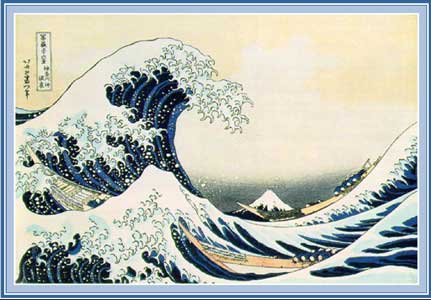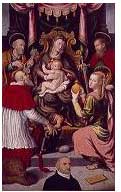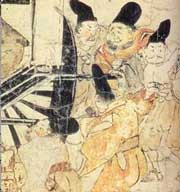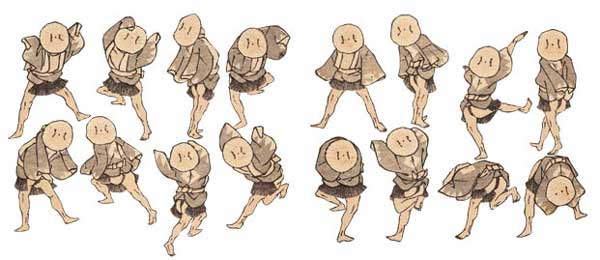1. Read the following paragraph and answer the questions in Japanese.
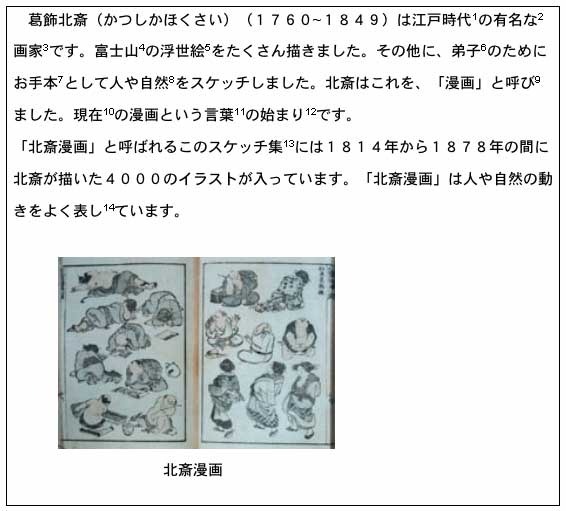
<Useful Vocabulary>
|
1. えどじだい:Edo Period |
2. ゆうめいな |
|
3. がか:painter |
4. ふじさん |
|
5. うきよえ:ukiyoe woodblock print |
6. でし:student |
|
7. てほん:example |
8. しぜん:nature |
|
9. AをBとよぶ:call A as B |
10. げんざい:present day |
|
11. ことば:word |
12. はじまり |
|
13. 〜しゅう:collection of 〜 |
14. あらわす:express |
1) 葛飾北斎は何をした人ですか。
2) 北斎は弟子のために何をしましたか。
3) 北斎は弟子のために描いたスケッチを何と呼びましたか。
4) 北斎漫画の特徴(とくちょう:characteristics) は何ですか。
2. Look below at Hokusai's drawings of people from the "Hokusai-manga" and answer the questions.
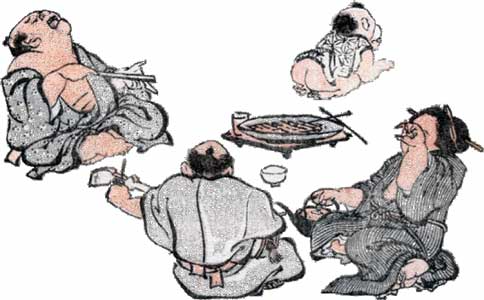
1) Discuss in pairs. Describe the people in the picture in Japanese. Who are they? What are they doing? What do they look like?
2) How do you suppose the laughing of the man in the further left and woman in the right sound? Choose the appropriate laughter from below. Draw a balloon for each of them in the picture and write the appropriate sound in it.
a. ワッハッハ b. シクシク c. ワーワー d. ホホホ
3. Look at Hokusai's drawing of natural scenes. What do you think the people in the boat might be saying? Draw a bubble in the picture and write what they are saying.
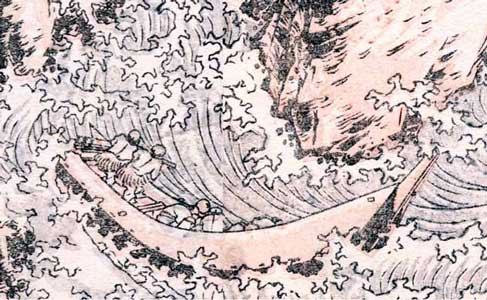
4. Look at another drawing from the "Hokusai-manga" below and answer the following questions.
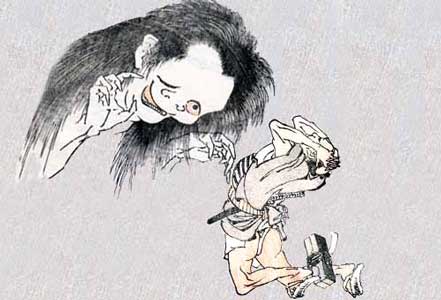
1) What do you suppose the creature on the top left of the picture is? First, using a kanji dictionary, look up what each of the following option is pronounced and what it means.
a. 怪獣
b. 幽霊
c. 宇宙人
2) What is it doing?
3) Which occupation does the person in the bottom right picture hold? Look up the words you don't know using a kanji dictionary.
a. 侍
b. 農民
c. お坊さん
4) How does he look?
5) What expressions might each of the characters in the picture be uttering? In pairs, come up with some expressions. Draw a bubble for each person in the picture and write the expression in it.
